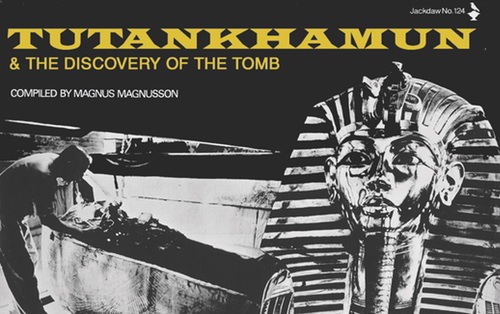
Tutankhamun & The Discovery of the Tomb
For seven years Howard Carter had searched for a royal tomb, which he was convinced lay undiscovered in Egypt's Valley of the Kings. In 1922, Lord Carnarvon, who was backing the venture, reluctantly agreed to finance him for one final season. On November 4th, Carter arrived at the site for the second day of the final dig. His workmen were waiting for him in expectant silence. They had uncovered the top of a flight of steps leading down into the earth. So began one of the most thrilling archaeological adventures ever; the steps were the entrance to the only royal tomb ever found intact in Egypt. Howard Carter had discovered the tomb of Tutankhamun, who had lain virtually undisturbed for over 3,000 years. This primary source portfolio traces the story of the excavation, illustrating Carter's work as an archaeologist, and the enormous public interest in the discovery of the tomb. Through pictures, drawings, and a model, it shows the treasures buried with the young pharaoh, and the fabulous golden shrine and coffins in which the mummy of Tutankhamun lay in its blackened bandages. A wealth of contemporary illustrations bring the ancient world, in which the mysterious young pharaoh lived and died, to present-day for your students. This portfolio includes a Study Guide with reproducible student activities. 4 Illustrated Broadsheet Essays: * The Gift of the Nile * Who was Tutankhamun? * Burying a Pharaoh * Finding the Tomb 10 Primary Source Documents: * The gold-plated back panel from Tutankhamun's throne, showing the young pharaoh with his wife * Page from the News of the World, April 8th, 1923, reporting the death in Egypt of Lord Carnarvon * Letter to Howard Carter from his Egyptian foreman * Two of the index cards prepared by Carter with notes and drawings of the items in the tomb * A picture sheet showing some of the Tutankhamun treasures * The work of an archaeologist, a picture strip showing how Carter unpacked the tomb * The wall painting from the burial chamber * A model of the outer shrine * A page from the papyrus of Ani relating to the Egyptians' beliefs about death * The people of Egypt, a picture strip








